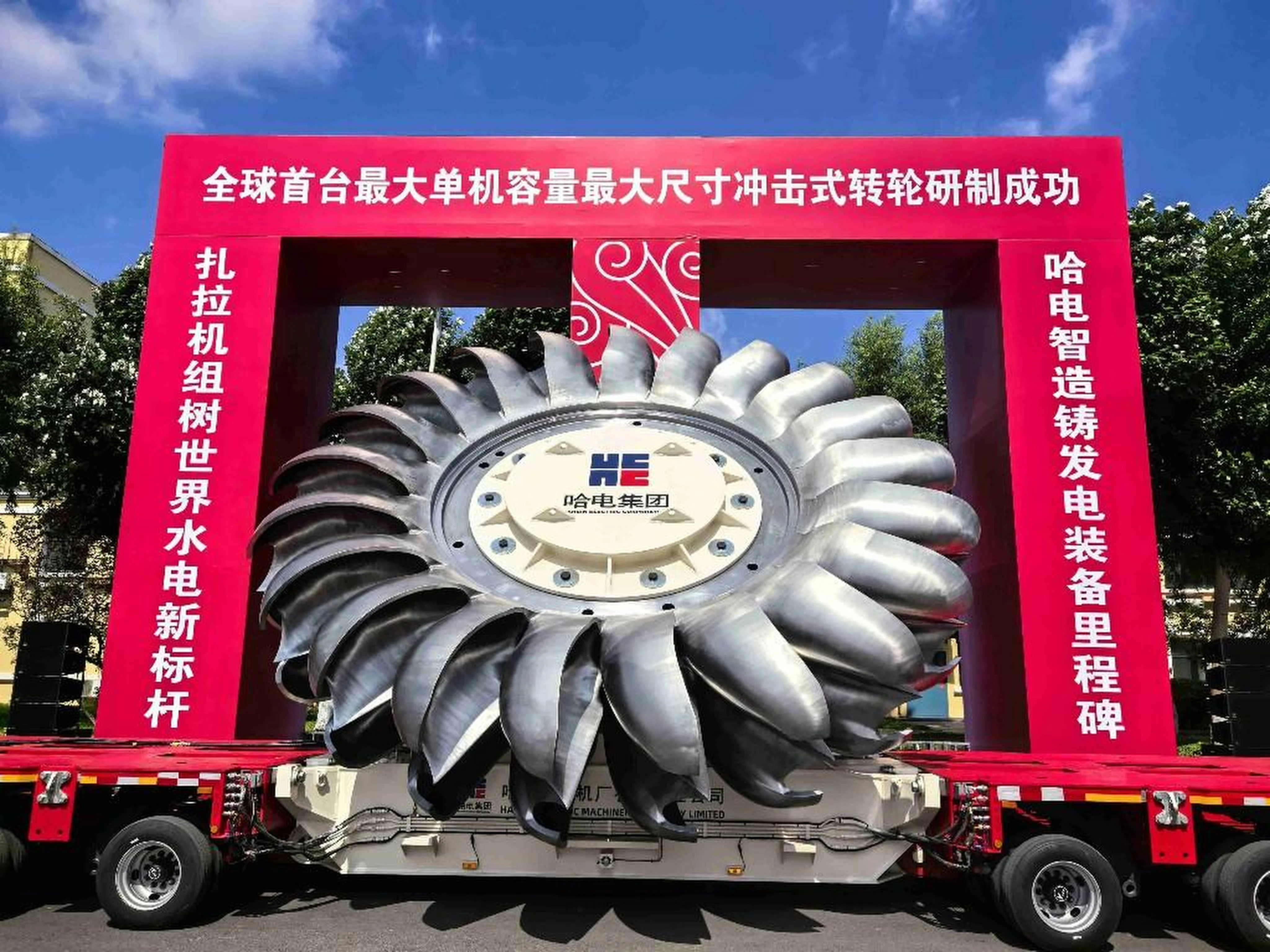By Holly Chik
China is ready to install a large impulse turbine at the Datang Zala Hydropower Station in Tibet autonomous region, according to the official Science and Technology Daily.
The home-grown turbine, with a maximum capacity of 500 megawatts, has the world’s largest single-unit capacity, according to the report on Wednesday. Two turbines will be installed at the station.
The 80-tonne turbine left its developer plant at Harbin Electric Machinery Company in northeast China on Wednesday after four years of design and testing.
The Datang Zala Hydropower Station is located on the Yuqu River, a tributary of the Nu River, which flows from southwest China through Yunnan province to eastern Myanmar and empties into the Andaman Sea.
The turbine is made of martensitic steel, a type of stainless steel known for its durability, strength and corrosion resistance. It has 21 water buckets and an outer diameter measuring 6.23 metres (20 feet).
Science and Technology Daily called the turbine the “heart” of the hydropower unit.
“The bucket-type wheel of the turbine is the core component of the unit. It plays a key role in converting the kinetic energy of the water flow into mechanical energy,” it said.
In January, the newspaper reported that the new turbine could improve power generation efficiency at the hydropower station, which features a vertical distance of 671 metres between the water level in the reservoir and the turbine.
“An impulse water turbine is a hydraulic machine that guides water flow through a pressure pipeline to strike a bucket-type wheel for energy conversion,” it said.
“The wheel is one of the most critical load-bearing and flow components … During operation, the turbine constantly endures high-frequency dynamic pressure, playing a vital role in the safe and stable operation of the unit.”
Tao Xingming, chief technology officer at Harbin Electric Machinery Company, told the newspaper that the technological breakthrough would raise power generation efficiency from 91 to 92.6 per cent.
“For a 500-megawatt unit operating 24 hours a day, a 1.6 per cent increase in efficiency would mean generating an additional 190,000 kilowatt-hours of electricity each day,” Tao said.
The power station will have a total installed capacity of 1 million kilowatts and is designed to generate nearly 4 billion kilowatt-hours annually, according to China Datang Corporation, which is building the station.
The power generated would be equivalent to burning 1.3 million tonnes of standard coal every year, reducing carbon dioxide emissions by 3.4 million tonnes, the state-owned power generation firm said on social media last year.
The hydropower station is on track “for on-schedule commissioning”, according to an April report from the State-owned Assets Supervision and Administration Commission of the State Council, a government agency that manages and oversees state-owned enterprises.
When construction of the main section began in 2023, state news agency Xinhua reported the station was expected to begin operations in 2028.
China has intensified its dam-building efforts since 2020, following Beijing’s goal of achieving carbon neutrality by 2060.
China continued to dominate hydropower development globally last year, accounting for the vast majority of Asia’s newly added capacity as it invests heavily in energy storage solutions, according to the International Hydropower Association.
“With more than 200 gigawatts of [pumped storage hydropower] under construction or approved, China is on track to exceed its 2030 target of 120GW, potentially reaching 130GW by the end of the decade,” it said in a report released last month.
Pumped storage hydropower is an energy storage system that transfers water between two reservoirs at higher and lower elevations. When there is surplus power in the grid, water is pumped to the higher reservoir. As demand rises, the water is released to generate electricity.
